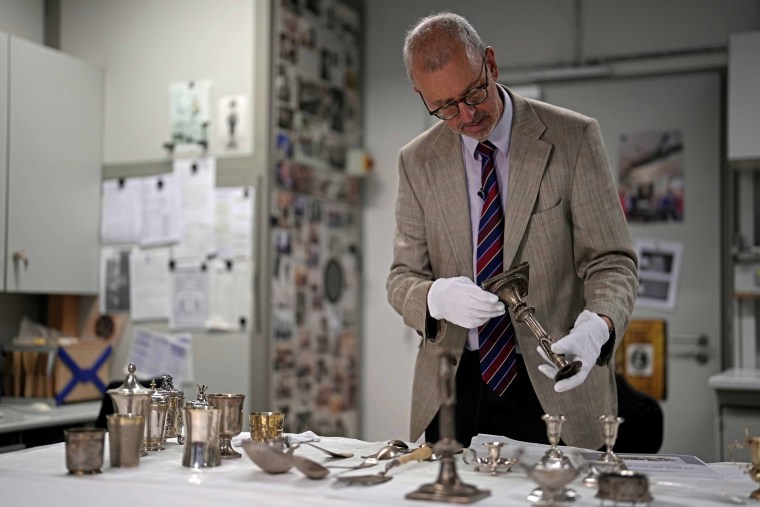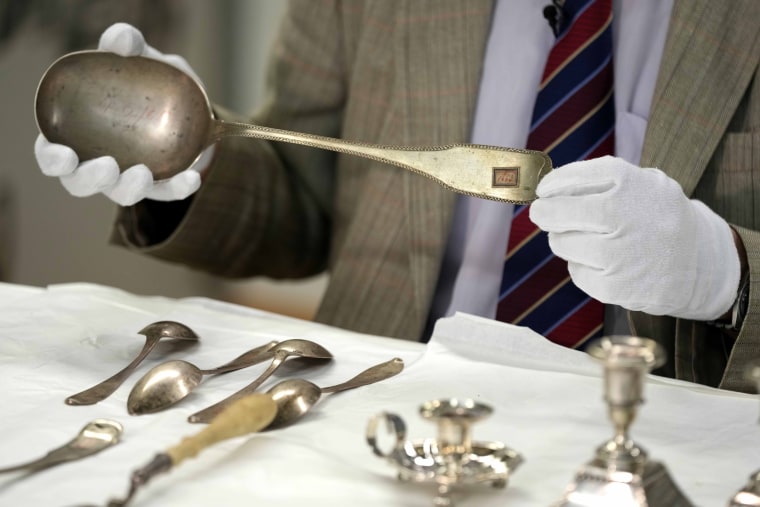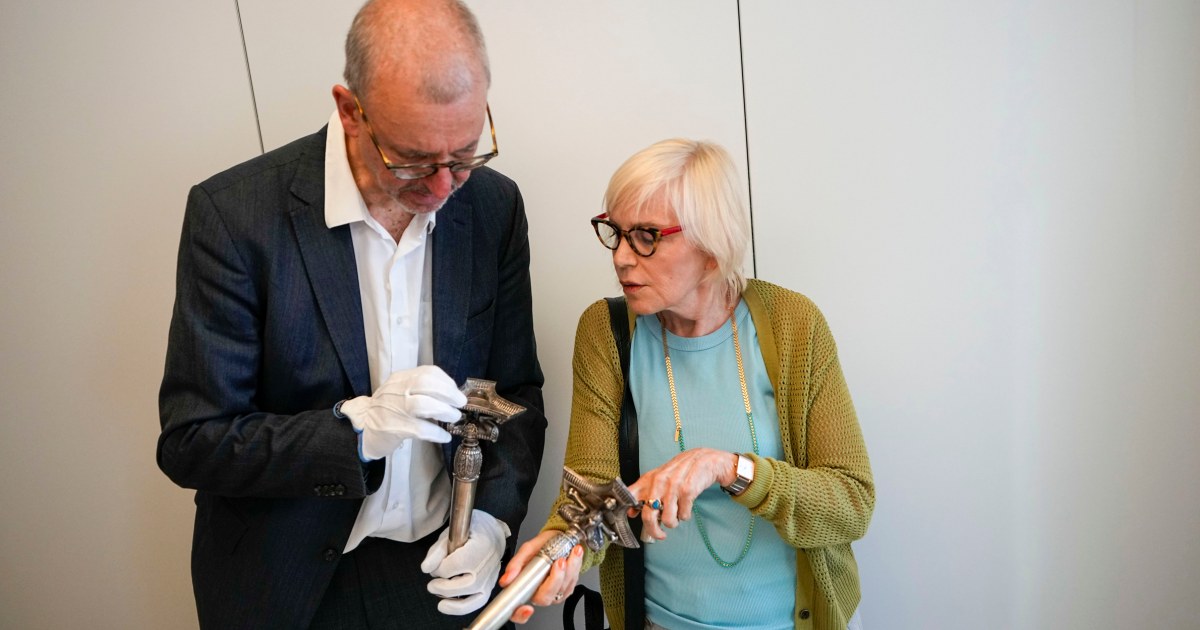MUNICH (AP) — Matthias Weniger pulled on a pair of white cloth gloves and carefully lifted a tarnished silver candlestick, looking for a yellowed sticker on the bottom.
The chandelier is one of 111 silver items in the Bavarian National Museum that the Nazis stole from Jews during the Third Reich in 1939. It was then that they ordered all German Jews to take their personal silver items to pawnshops. of the entire Reich, one of the many laws created to humiliate, punish and exclude Jews.
What began with discrimination and persecution against Jews in 1933, after the Nazis were elected to power in Germany, led to the murder of six million European Jews in the Holocaust before World War II ended with the surrender. from Germany in 1945.
Weniger, who is a curator at the Munich museum and oversees its restitution efforts, has made it a point to return as many silver objects as possible to the descendants of the original owners.
“These silver items handed over to pawnshops are often the only material things left from an existence wiped out in the Holocaust,” Weniger told The Associated Press in an interview last week in the museum workshop, where he exhibited some articles of silver that have yet to be restored.
«Therefore, it is very important to try to find the families and return the objects to them,» he added.
Thousands of the pieces taken from the Jews were melted down into some 135 tons of silver and used to aid Germany’s war efforts. But several museums ended up with hundreds of pieces of silver, including candlesticks used to light candles on Shabbat eve, kiddush cups for blessing wine, silver spoons and cake servers.
Some of the items were returned to Holocaust survivors in the 1950s and 1960s, if they came forward and actively tried to recover their stolen possessions. But many former owners were killed in the Holocaust or, if they managed to flee the Nazis, ended up in remote corners of the world.
“Two-thirds of the last owners did not survive the Shoah,” Weniger said.
Despite these odds, and with a combination of painstaking detective work, dedication, and deep knowledge of history, Weniger has so far managed to return around 50 objects to family members and relatives of the original owners.

He is convinced that he can return most of the remaining items by the end of this year.
First, look up the identity of the original owners. The little yellowish paper stickers on some of the pieces often help in your efforts. They were put on objects by pawnshops, a testament to the obsessive bureaucracy of the Germans even in times of dictatorship and war. The numbers on the stickers also figure in documents more than 80 years old that name the Jews who had to give away their silver, sometimes a beloved heirloom that has been passed down in families for many generations.
Once Weniger discovers the names of the original owners, he begins searching genealogy databases and Jewish obituaries, hoping that direct descendants or more distant relatives have posted their names online.
«And so you go from one generation to the next and you end up with phone books… with LinkedIn, with Facebook, with Instagram or email addresses that correspond to a member of the younger generation of that family,» the researcher explained.
In most cases, Weniger says he’s lucky and can track down the right relatives.
Most of the descendants live in the United States and Israel, but the museum has already or is in the process of returning silver pieces to France, Britain, Australia and Mexico as well.
Weniger makes sure to personally deliver the pieces to the families. He traveled to the United States earlier this year and last week he returned 19 pieces to families in Israel.

There, Weniger met Hila Gutmann, 53, and her father, Benjamin Gutmann, 83, at their home in Kfar Shmaryahu, north of Tel Aviv, and handed them a small silver cup.
Weniger had managed to locate the family with the help of the Magen David Adom tracing service, Israel’s version of the International Committee of the Red Cross.
The cup was probably used for Kiddush to bless the wine on Shabbat eve, but no one knows for sure because the original owners, Bavarian cattle breeder Salomon Gutmann and his wife Karolina, who were Benjamin’s grandparents, were murdered by the Nazis in the Treblinka death camp.
“It was a mixed feeling for us to win the cup back,” said Hila Gutmann. «Because you understand that it is the only thing left of them.»
While Benjamin’s grandparents were killed in the Holocaust, his son Max, Benjamin’s father, survived because he fled from the Nazis to Palestine, what is now Israel.
Despite the grief caused by the loss and return of the silver cup, the Gutmanns say they are happy to get it back and plan to use it in a ceremony with all their other relatives on Rosh Hashanah, the Jewish New Year, in September.
As for Weniger, the cup bearer, the Gutmanns have nothing but praise for him and his work.
“He’s really dedicated to that,” Hila Gutmann said. «He treats these small objects very carefully, as if they were sacred.»

